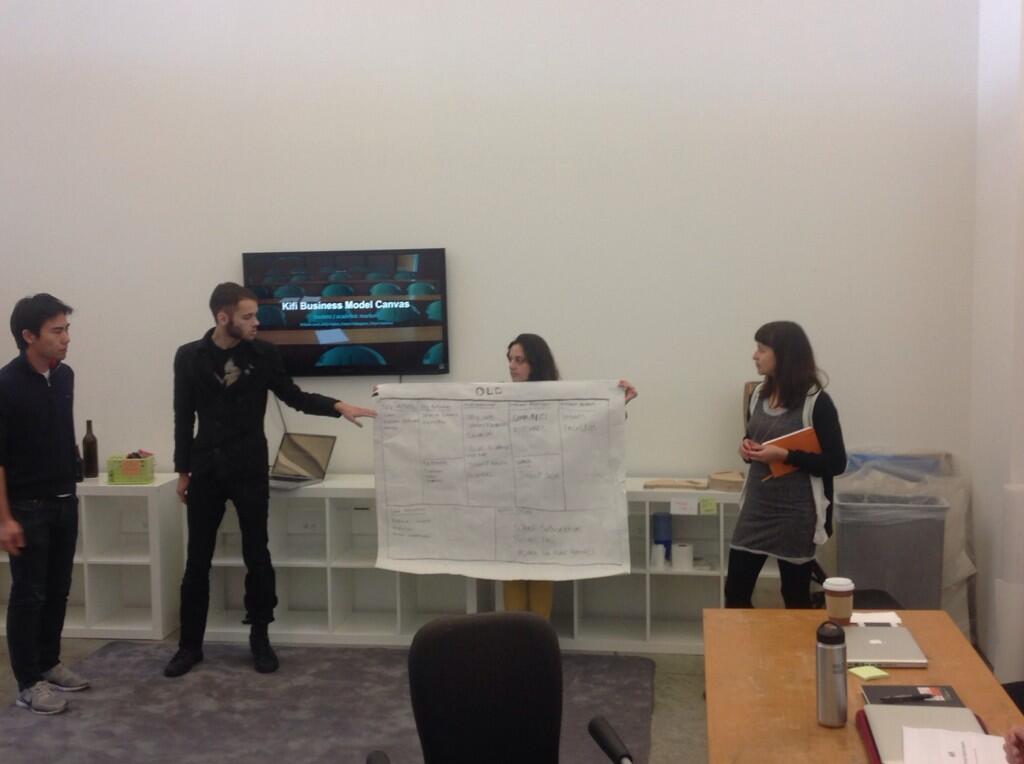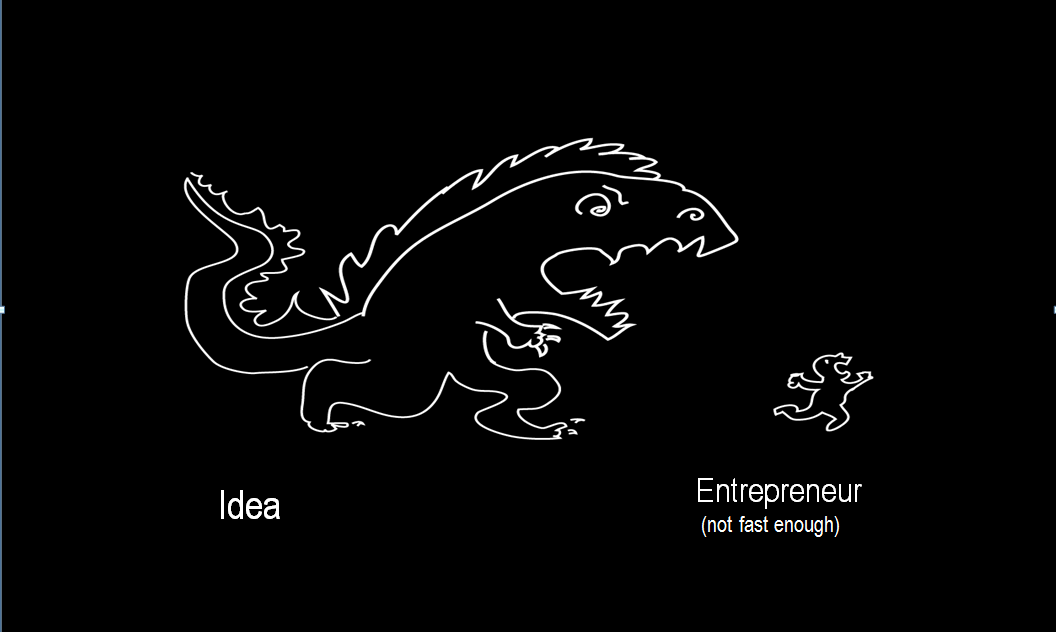The opening keynote was a woman, the closing keynote a black man. In between there were 16 white […]
Diversity Is Hard
Monday Commitments and Friday Wins
Many companies who try OKRs (Objectives and Key Results) fail, and they blame the system. But no system works if […]
The Art of the OKR
Read the updated post, Art of the OKR Redux instead! A lot has changed since 2014…. […]
Designer as Founder: Week Two Class Notes
This week the students presented the insights they gained from talking to users and how the evolved the […]
Designer as Founder: Week One Class Notes
I’ve begun teaching a class at CCA called Designer as Founder. Having made that transition myself, and with […]
27 Thoughts on Product Management
Riding the train this morning, I thought about what it takes to be a Product Manger. I was […]
What the Agency Doesn’t Know
Watch this Webstock ’13: Mike Monteiro – How Designers Destroyed the World from Webstock on Vimeo. I […]
Don’t Kill Your Channels
A channel is a way you can reach your users. It can be email, notifications, stories in a Facebook stream or even […]
We Have Met the Enemy, and It’s Not Us
This was inspired by an exchange with a friend who is a consultant, and can’t stand the idea […]
Tell Me a Little Bit About Yourself
Everyone should know how to introduce themselves to a prospect. You can be a designer on an interview, […]
Why You Should Speak
At conferences and meet-ups, I spend a lot of time with young practitioners. And every time I chat […]
The Harry Max Boot-up Protocol (How to get going in the morning)
Harry is one of the smartest people I know, and gets a ton done. When he agreed to […]
Three Points of View to Get You Through the Day
My job is one of the most challenging (and most fun) I’ve had in a long time.  A turnaround is […]
How to Hire a Designer
A few days ago, I read an article with the same title as this post. Oh, maybe it was How to Hire a User Experience Professional, or Interaction Designer or Information Architect, or whatever. I don’t recall. There isn’t so much difference anyhow. I do remember it said things like “look at their presentation skills”, “see if their personas are based on research” and something about their wireframes. I tweeted that’s why I wouldn’t hire a designer, which caused some kerfuffle with my followers. And it’s hard to clarify in 140 characters what teed me off about the original article.
Here’s why I wouldn’t hire someone based on wireframes, Powerpoint and persons: it’s not because these are necessarily bad (well, except the wireframes, which are so 2001 that they are the mullet of deliverables, and like the mullet I cannot wait until they are finally gone and I’m not asked to stare at them any longer.) I was bummed because these are merely artifacts and not necessarily the vital critical thinking skills you need to find in a decent designer.
I really don’t care if you never do personas, or if you make them up from a guy you talked to in the grocery story. I don’t care if you use keynote, Powerpoint or Illustrator. And honestly, I would hire someone if they did wireframes even though I hate the darn things.
So how do I vet designers, if not by their paperwork?
3 Kinds of Free
3 Kinds of Free, originally uploaded by armanz.
The Day I Woke Up Without Arms And Legs.
|Morten Lund – It’s all about luck First of all I’m really really sorry to say that my […]
Notes from last night’s product managment class
Last night’s Product Management class covered two important business areas: Business development (Guest lecturer to remain anonymous) and “Tips for success in growing revenues” – Guest Lecturer: Steve Tennant. I’ll put up tennant’s slides when/if they become available. The BD talk was from an individual from a big company with a lot of paranoia any time any of their people talk, I appreciated the chance to learn.
A couple of metaobservations. In a case study, one observation was that advertisers just won’t advertise against user-generated media. There is too much concern over potential porn, infringement and old-fashioned crappiness, making many UGD projects unprofitable, despite guarantees you put in place. Hardly news: i remember randy Farmer mentioning this being a problem back in his palace days. Interesting that with the prevalence of UGC it still hasn’t been solved though.
Secondly, it was pointed out that 99% of your end users will watch the work of the 1% who will actually make content with any tool you offer, which means you have got to make certain that you have enough traffic that 1% of that 1% will actually be cool enough to attract an audience (Don’t forget Sturgeon’s law!), or the whole thing is unprofitable.
The News Business
Out of Print in The New Yorker
Three centuries after the appearance of Franklin’s Courant, it
no longer requires a dystopic imagination to wonder who will have the
dubious distinction of publishing America’s last genuine newspaper. Few
believe that newspapers in their current printed form will survive.
Newspaper companies are losing advertisers, readers, market value, and,
in some cases, their sense of mission at a pace that would have been
barely imaginable just four years ago. Bill Keller, the executive
editor of the Times, said recently in a speech in London, “At
places where editors and publishers gather, the mood these days is
funereal. Editors ask one another, ‘How are you?,’ in that sober tone
one employs with friends who have just emerged from rehab or a messy
divorce.” Keller’s speech appeared on the Web site of its sponsor, the Guardian, under the headline “NOT DEAD YET.”
Tell Me a Story
Truth, naked and cold, had been turned away from every door in the village. Her nakedness frightened the […]
PARC Forum | January 10, 2008
Bernardo A. Huberman has been, so far, the most impressive speaking in a very impressive series. and, lucky […]
More thoughts on Free, and an application
The Wired article on Free has an excellent list of ways free can happen; the one I think […]
Free! Why $0.00 Is the Future of Business
Free! Why $0.00 Is the Future of Business Thanks to Gillette, the idea that you can make money […]
Notes from Andrew McAfee at Parc Forum
enterprise 2.0 old business processes/tools allow management impose their will on company enterprise 2.0 is the use of […]
Don’t Listen to Your Users
via IT conversations Malcolm explores why we can’t trust people’s opinions — because we don’t have the language […]
Brand
“A brand is the sum of the good, the bad, the ugly and the off-strategy. It is your […]
The Future of Reading (A Play in Six Acts)
A rather eloquent if occasionally overwraught essay on what the Kindle stands for on dive into mark opens […]
Facebook Bows To Privacy Critics
via huffington post Seeking to keep the peace in its popular online hangout, Facebook Inc. has overhauled a […]
Sharecropping the long tail
via Rough Type To put it a different way, the sharecroppers operate happily in an attention economy while […]
Damn Spam
The New Yorker’s Annals of Technology “If you used to have to send fifty thousand pieces of spam […]
Graphing Social: Facebook Fanboy panel
Facebook Fanboy panel: Pro vs Con – Michael Arrington TechCrunch (moderator), Robert Scoble Podtech.net, Jason Calacanis Mahalo, Rodney […]







